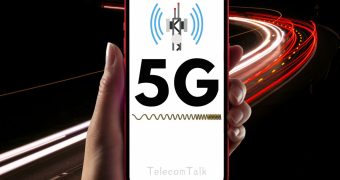
India's private telecom operators — Bharti Airtel, Reliance Jio and Vodafone Idea (Vi) — have reiterated the need for a comprehensive spectrum roadmap to support the country's 5G ambitions and the exponential growth of the Internet of Things (IoT) device ecosystem. Speaking at the eighth edition of the ETTelecom 5G Congress 2025, industry executives highlighted that the current spectrum allocation is insufficient to meet the anticipated demand.
Also Read: Airtel FWA, Jio Focus on AI, FWA and 6G, Vodafone Idea’s High-Quality User Experience on 5G: Report
Bharti Airtel
Citing a GSMA report, Rahul Vatts, Chief Regulatory Officer at Bharti Airtel, said the Indian telecom industry requires approximately 2,000 MHz of spectrum by 2030. At present, only 400 MHz is available.
"There is a humongous need for spectrum going ahead. Some reports show about 30 billion IoT devices, which will also require spectrum," Vatts reportedly said during a panel discussion at the event. He proposed mechanisms such as spectrum swapping and adjusting payments for future spectrum dues if a telco surrenders airwaves to ensure better utilisation and flexibility for operators.
"For instance, if I have already paid for spectrum, and now I feel I could have used 1800MHz or 2100MHz better. I surrender that spectrum, and if I have paid that money to you (Central government) for the next few years, naturally, you either refund me or adjust me against future spectrum dues," Vatts was quoted as saying in the report. "We have to look at the future. We are talking about 5,400 exabytes to 54,000 exabytes of data. We have to start now with regards to a spectrum roadmap."
Vodafone Idea
Ambika Khurana, Chief Regulatory Affairs Officer at Vi, echoed the concerns, suggesting that the actual requirement could exceed the initial estimates. The industry may require more than 2GHz. "So having a collaborative dialogue between the government, the industry, advisors and think tanks while looking at global practices would be the way ahead to ensure that we do not have the scarcity we are talking about," she added, as per the report.
Reliance Jio
AK Tiwari, President (Regulatory and Policy) at Reliance Jio, called for the allocation of additional spectrum in the 3.5 GHz mid-band and the release of contiguous bands in the 6 GHz to 8.4 GHz range. He reportedly added that allotting the 6GHz to International Mobile Telecommunications (IMT) services would contribute to the digital economy of India.
"Apart from the upper 6GHz, which is called the golden band, up to 8.4GHz, right from 7.125GHz is very important, because it is a contiguous band. And giving the contiguous bands to telcos would ensure better spectrum and capacity utilisation," Tiwari said, as per the report.
Also Read: Airtel, Jio, and Vodafone Idea: Data Usage Trends and ARPU in Q3FY25
5G Subscriber Base in India
Meanwhile, Finnish telecom equipment maker Nokia projected that India's 5G subscriber base would grow from 270 million currently to 770 million by 2028. Vibha Mehra, Vice President (Government Affairs), Nokia APAC, stressed that additional spectrum should be made available within the next three years in a single tranche to enable effective network planning and deployment.
Government Response
In response, Sunil Kumar Singhal, Deputy Director General (License and Policy), Department of Telecommunications (DoT), asserted that spectrum availability generally exceeds operator demand.
"We have observed that normally, the spectrum availability is more than the demand on the ground. In addition to the mid-band spectrum that we are already working on, we have now also started working on high-end millimeter wave bands, including terrahertz spectrum bands in India," Singhal was quoted as saying in the report. "So I don't see any shortage of spectrum in the times to come for operators in the country," he added.
GSMA Intelligence
Radhika Gupta, Head of Data Acquisition, Senior Director at GSMA Intelligence, noted that while India has performed well in 5G rollout and infrastructure, it ranks 32nd out of 39 countries surveyed by the agency across six indicators — including network infrastructure and services — due to relatively weak spectrum portfolios.
4G/5G Monetisation: Monetising 4G and 5G: Key Takeaways to Date and What’s Next?
"Here, a lower number reflects a good performance. India has scored fairly well on network infrastructure and services. And this has been achieved due to Indian telcos' fastest 5G roll-outs in the country. But India scored low on some of the areas, like spectrum portfolios and all those things," Gupta reportedly said, who also moderated the panel discussion.
According to GSMA Intelligence, 5G could contribute USD 455 billion to India's economy between 2023 and 2040 — a potential that hinges on the implementation of an industry-friendly and future-ready spectrum policy.















